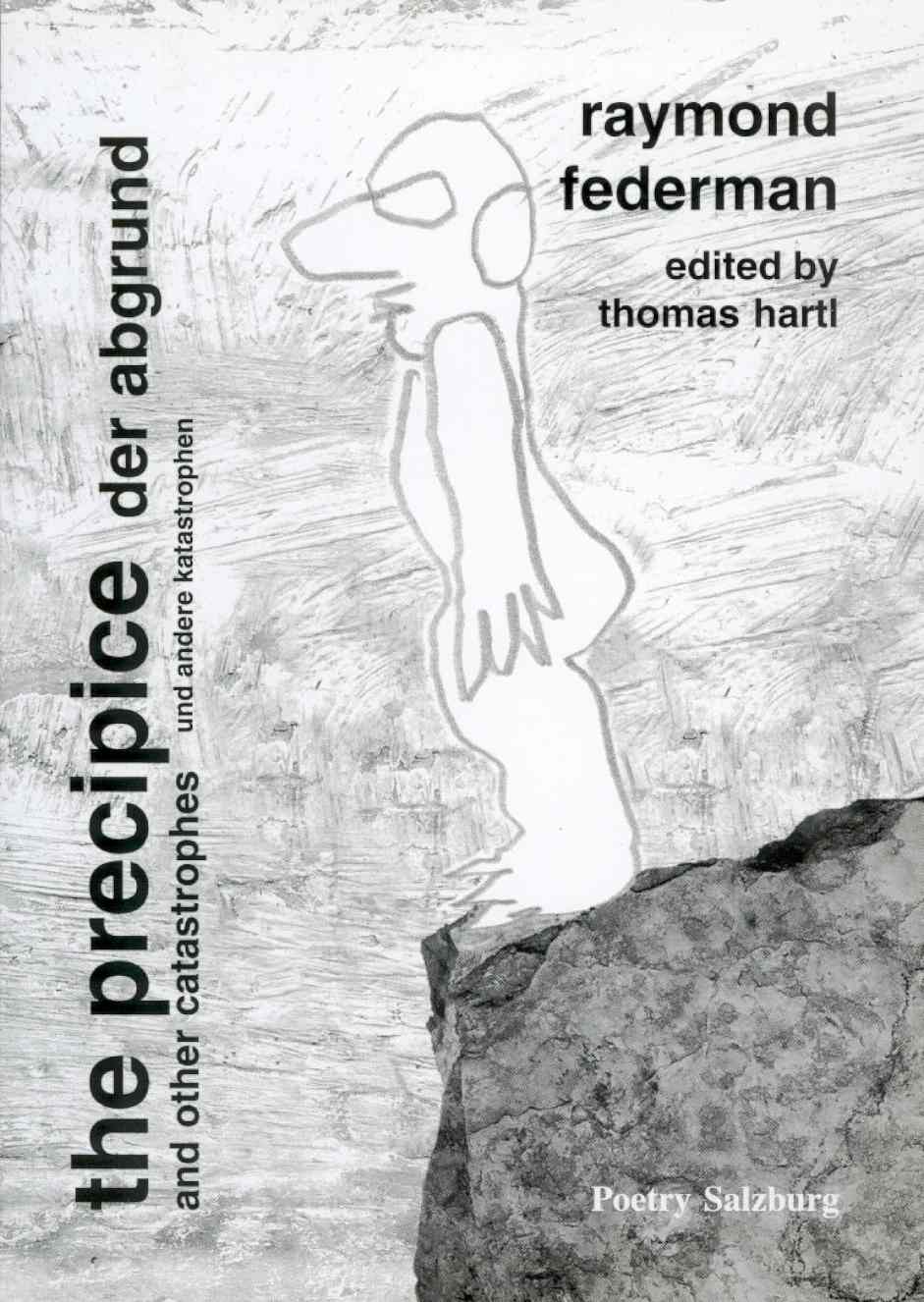
the precipice and other catastrophies / der abgrundund andere katastrophen
1999. 159 pp. ISBN-13 978-3-901993-04-6; ISBN-10 3-901993-04-5
£11.50 (+ 2.00 p&p), €12.00 (+ 2.00 p&p), US$ 15.00 (+ 3.00 p&p).
 | Raymond Federman (ed. and intr. by Thomas Hartl) the precipice and other catastrophies / der abgrundund andere katastrophen 1999. 159 pp. ISBN-13 978-3-901993-04-6; ISBN-10 3-901993-04-5 |
Excerpts from the introduction by Thomas Hartl
Raymond Federman - the writer, the word-being - has always lived closeto, or better yet: right on the edge of the precipice. He is always (already)writing/telling (his) texts [. . .] at the edge of the precipice leaningagainst the wind. Far from being merely intended and conceptualized asa metaphor, a trope/trap, this precarious imaginary topography maps a semioticuniverse that is distinctly post-modern and postholocaust. The precipicein fact precipitates Federman's fiction. In a kind of "theoretical prologue"to his third novel Take It or Leave It (1976) we read: "Leaningagainst the winds over a precipice syntax integrates itself to the constraintsof the paper / its format / its dimensions / its margins / its edges /its consistency / its whiteness" (n. pag.). Federman was pushed down theprecipice a long time ago (in 1942, when the Gestapo came up the stairsand his mother pushed him into a closet at the landing of the stairs tosave him from deportation - he is the only survivor of his family - hisfamily exxed out by the Nazis: X-X-X-X). But he survived by hurling himselfup again with the help of a thick rope of words. A postmodern bilingualOrpheus with a thick French accent, he has come back to haunt postmodernliterature and improvises (noodles and doodles, in fact) his jazz tunesbuilt on the cadences of absence.
The precipice for Federman has thus become the edge that is always thereto be surpassed, and at the same time it has become the barrier that cannotbe undone. It is the kind of writing that seeks to erase/absent itself,and in the end it is language that is our only means for not absentingourselves/our selves in favor of silence. The precipice is a postmodernspace, a topography haunted by indeterminacy, plurality, glissementand différance. [. . .] It is a communal space where discoursescriss-cross and counter-fuck while poised dangerously close to the chasmof unintelligibility - thus the necessity of saying and saying over andover again the "same" thing. Figuratively speaking, as the OED has it,a "precipice" denotes "a perilous situation, a hazardous position" - thisperilous situation is the act of writing per se, the danger of the precipitateor headlong fall or descent into the lessnessness of words severed fromtheir referents that leaves the writer precipiced and transforms writinginto precipice-writing.
Read more about Raymond Federman
Send an e-mail to order this book